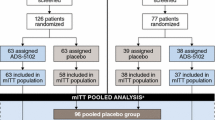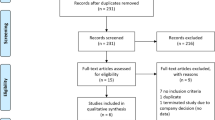Abstract
Parkinson’s disease is an age-related degenerative disorder of the central nervous system that often impairs the sufferer’s motor skills and speech, as well as other functions. Symptoms can include tremor, stiffness, slowness of movement, and impaired balance. An estimated four million people worldwide suffer from the disease, which usually affects people over the age of 60. Presently, there is no precedent for approving any drug as having a modifying effect (i.e., slowing or delaying) for disease progression of Parkinson’s disease. Clinical trial designs such as delayed start and withdrawal are being proposed to discern symptomatic and protective effects. The current work focused on understanding the features of delayed start design using prior knowledge from published and data submitted to US Food and Drug Administration (US FDA) as part of drug approval or protocol evaluation. Clinical trial simulations were conducted to evaluate the false-positive rate, power under a new statistical analysis methodology, and various scenarios leading to patient discontinuations from clinical trials. The outcome of this work is part of the ongoing discussion between the US FDA and the pharmaceutical industry on the standards required for demonstrating disease-modifying effect using delayed start design.





Similar content being viewed by others
References
Leber P. Slowing the progression of Alzheimer disease: methodological issues. Alzheimer Dis Assoc Disord. 1997;11(5):S10–21.
Mani RB. The evaluation of disease modifying therapies in Alzheimer’s disease: a regulatory viewpoint. Stat Med. 2004;23(2):305–14.
Clarke CE. A “cure” for Parkinson’s disease: can neuroprotection be proven with current trial designs? Mov Disord. 2004;19(5):491–8.
Parkinson Study Group. A controlled, randomized, delayed-start study of rasagiline in early Parkinson disease. Arch Neurol. 2004;61(4):561–6.
Chan PL, Holford NH. Drug treatment effects on disease progression. Annu Rev Pharmacol Toxicol. 2001;41:625–59.
Guimaraes P, Kieburtz K, Goetz CG, et al. Non-linearity of Parkinson’s disease progression: implications for sample size calculations in clinical trials. Clin Trials. 2005;2(6):509–18.
Rubin DB. Inference and missing data. Biometrika. 1976;63:581–92.
Little RJA, Rubin DB. Statistical analysis with missing data. New York: Wiley; 1987.
The NINDS NET-PD Investigators. A randomized, double-blind, futility clinical trial of creatine and minocycline in early Parkinson disease. Neurology. 2006;66(5):664–71.
Shults CW, Oakes D, Kieburtz K, et al. Effects of coenzyme Q10 in early Parkinson disease: evidence of slowing of the functional decline. Arch Neurol. 2002;59(10):1541–50.
The NINDS NET-PD Investigators. A randomized clinical trial of coenzyme Q10 and GPI-1485 in early Parkinson disease. Neurology. 2007;68(1):20–8.
Holford NH, Chan PL, Nutt JG, et al. Disease progression and pharmacodynamics in Parkinson disease—evidence for functional protection with levodopa and other treatments. J Pharmacokinet Pharmacodyn. 2006;33:281–311.
Watts RL, Jankovic J, Waters C, et al. Randomized, blind, controlled trial of transdermal rotigotine in early Parkinson disease. Neurology. 2007;68(4):272–6.
Korczyn AD, Brunt ER, Larsen JP, et al. A 3-year randomized trial of ropinirole and bromocriptine in early Parkinson’s disease. The 053 Study Group. Neurology. 1999;53(2):364–70.
Olanow CW, Kieburtz K, Stern M, et al. Double-blind, placebo-controlled study of entacapone in levodopa-treated patients with stable Parkinson disease. Arch Neurol. 2004;61(10):1563–8.
Larsen JP, Boas J, Erdal JE. Does selegiline modify the progression of early Parkinson’s disease? Results from a five-year study. The Norwegian-Danish Study Group. Eur J Neurol. 1999;6(5):539–47.
Parkinson Study Group. A controlled trial of rasagiline in early Parkinson disease: the TEMPO Study. Arch Neurol. 2002;59(12):1937–43.
Parkinson Study Group. Pramipexole vs levodopa as initial treatment for Parkinson disease: a randomized controlled trial. Parkinson Study Group. JAMA. 2000;284(15):1931–8.
Fahn S, Oakes D, Shoulson I, et al. Levodopa and the progression of Parkinson’s disease. N Engl J Med. 2004;351(24):2498–508.
Palhagen S, Heinonen E, Hagglund J, et al. Selegiline slows the progression of the symptoms of Parkinson disease. Neurology. 2006;66(8):1200–6.
Chan PL, Nutt JG, Holford NH. Modeling the short- and long-duration responses to exogenous levodopa and to endogenous levodopa production in Parkinson’s disease. J Pharmacokinet Pharmacodyn. 2004;31(3):243–68.
Ploeger BA, Holford NH. Washout and delayed start designs for identifying disease modifying effects in slowly progressive diseases using disease progression analysis. Pharm Stat 2008, in press.
Hendrix SB. AAPS workshop on demonstrating disease-modifying effects for the treatment of Parkinson’s disease: drug development and regulatory issues, Arlington, VA; 2008
Acknowledgments
The authors wish to acknowledge Parkinson’s Study Group, NIH Exploratory Trials in Parkinson’s Disease (NET-PD) Group for providing access to clinical trial data. We are also grateful for the insightful discussions and feedback provided by numerous FDA and academic colleagues, and by professional organizations such as American Association of Pharmaceutical Scientists (AAPS) and Michael J Fox Foundation for Parkinson’s Research.
Author information
Authors and Affiliations
Corresponding author
Additional information
Disclaimer
The views expressed in this article are those of the authors and do not necessarily reflect the official views of FDA.
Rights and permissions
About this article
Cite this article
Bhattaram, V.A., Siddiqui, O., Kapcala, L.P. et al. Endpoints and Analyses to Discern Disease-Modifying Drug Effects in Early Parkinson’s Disease. AAPS J 11, 456–464 (2009). https://doi.org/10.1208/s12248-009-9123-2
Received:
Accepted:
Published:
Issue Date:
DOI: https://doi.org/10.1208/s12248-009-9123-2




